This is the Canon AS-6, a 35mm water resistant point and shoot camera made by Canon starting in February 1986. The Canon AS-6 was sold in the United States as the “Aqua Snappy” but retained the AS-6 logo on the front of the camera. The AS-6 was fully automatic with a 5-element Canon lens, fixed focus, and programmed auto exposure. It could withstand being submerged in water up to 10 meters deep, making it a popular choice for a underwater vacation camera. It can be shot above and below water with or without the optional yellow plastic sports viewfinder. It was sold with an optional close-up kit which allowed photographers to properly compose and focus on images up close such as underwater coral and other things.
Film Type: 135 (35mm)
Lens: 35mm f/4.5 Canon coated 5-elements in 5-groups
Focus: Fixed (5 feet to infinity on land, 3.3 feet to 10.7 feet in water)
Viewfinder: Albada Type Reverse Galilean Viewfinder, 0.45x magnification, optional plastic sports finder
Shutter: Electromagnetic Twin Blade Shutter
Speeds: 1/40 – 1/250 seconds
Exposure Meter: Coupled CdS Cell w/ Full Programmed AE
Battery: (2x) 1.5v AAA Alkaline or Lithium Cells
Flash Mount: In-Body Automatic Flash
Other Features: DX Encoding, Shutter Lock, Rubber Body, Buoyant Body
Weight: 476 grams (w/ strap and viewfinder), 406 grams (camera only)
Manual: https://www.cameramanuals.org/canon_pdf/canon_as-6.pdf
How these ratings work |
The Canon AS-6 Aqua Snappy was the first purpose built underwater 35mm point and shoot camera made by a major manfacturer. It’s simple operation and fixed focus design means that even the most novice photographer could capture good images under water or in very wet conditions. As an above water camera, it is merely adequate, but underwater, the AS-6 really shines, is easy and fun to use. Plus with it’s rugged, bright orange body that floats in water, it is very easy to keep track of while swimming. | ||||||
| Images | Handling | Features | Viewfinder | Feel & Beauty | History | Age | |
| 1 | 2 | 1 | 1 | 2 | 1 | 0% | |
| Bonus | +1 for purpose built excellence, this camera was designed to do one thing, and it does that thing really well | ||||||
| Final Score | 9.0 | ||||||
History
Throughout the history of photography, many attempts at building a camera capable of underwater photography have been made. The first known underwater photographs were taken in 1856 by William Thompson using a camera mounted to a pole. Later underwater cameras were nothing more than water tight enclosures containing a box camera sealed with wax.
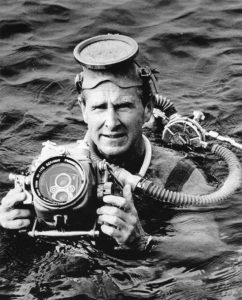
As photography advanced throughout the 20th century, so did underwater photography with the first underwater motion picture in 1914 and the first use of flash in 1926. In 1954 Franke & Heidecke built a water proof enclosure for the Rolleiflex TLR called the Rolleimarin for famous underwater photographer Hans Hass. Although suitable for depths as far as 100 meters, the Rolleimarin wasn’t actually a camera, rather just a housing that the Rolleiflex went inside of.

In 1956, French Naval explorer Jacques-Yves Cousteau helped design a new underwater camera with a French company specializing in manufacturing underwater equipment called La Spirotechnique.
After coming up with the design, La Spirotechnique contracted Belgian inventor Jean Guy Marie Josef de Wouters d’Oplinter to create a compact and self contained camera underwater camera.
A year later, a prototype camera, now called the Calypso-Phot, named after Costeau’s famous research ship, RV Calypso was revealed.
The Calypso-Phot was the first purpose built underwater 35mm camera to be put into production. The camera would be built by another French company called ATOMS (Association de Techniciens en Optique et Mécanique Scientifique), who had experience making shutters and cameras both under their own name and for other companies.
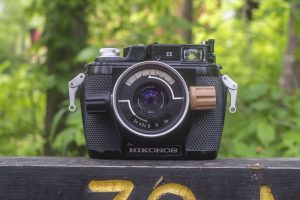 The camera would be produced by ATOMS until 1962 when an agreement would be made with Nippon Kogaku of Japan who would revise and re-release the camera as the Nikonos. The Nikonos would go on to become one of the most successful underwater 35mm cameras of all time, with evolutionary versions of that original camera produced until 2001.
The camera would be produced by ATOMS until 1962 when an agreement would be made with Nippon Kogaku of Japan who would revise and re-release the camera as the Nikonos. The Nikonos would go on to become one of the most successful underwater 35mm cameras of all time, with evolutionary versions of that original camera produced until 2001.
For as great as the Nikonos was, and other underwater housings like the Rolleimarin, they were expensive and complicated to build, as the photographer needed to find a way to interact with the camera’s physical controls to advance film, focus the lens, and change exposure. The Nikonos relied on four external O-rings and several more internal O-rings to keep water out of the internal housing. These O-rings needed to be checked and replaced with regularity to prevent leaks.
After the release of the Nikonos, little would change in the world of underwater photography until the 1980s when camera technology advanced enough for fully automatic point and shoot cameras could be put into water tight housings and used under water. With a fully automatic camera, things like film advance, exposure, and focus could all be done with internal motors, reducing the number of external controls. This would simplify the design, eliminating the need for so many o-rings.
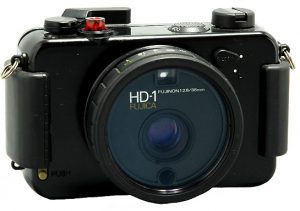
Although they weren’t designed for underwater per say, one company that got a jump on environmentally sealed cameras was Fuji, with the release of the Fujican HD-1 in 1979.
Built inside of a rugged rubber and plastic body, the HD-1 was intended for use in construction zones and other environmentally unfriendly situations where a normal camera wouldn’t last long.
The HD-1 wasn’t designed to be submerged into water, but could handle splashes and other high moisture areas.
A later version called the Fujica HD-M was released in 1984 which replaced the film advance lever with a motor drive that allowed the camera to be more water tight and was rated up to a depth of 2 meters making it the first truly underwater 35mm point and shoot camera.
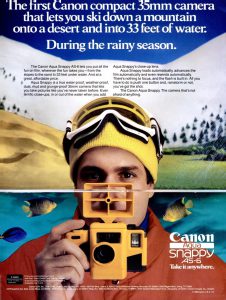
By 1986, the number of underwater 35mm cameras started to grow with options from Canon and Nikon released that year, and Minolta the next year. Canon was the first to market in February with the AS-6 or Aqua Snappy underwater camera.
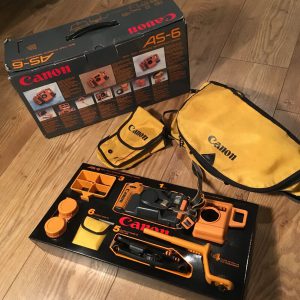
The Aqua Snappy was based off Canon’s already successful Snappy series, but came in a bright orange plastic and rubber body that was designed to not only be easy to see in water, but also floats. It could be purchased by itself it with some accessories including a large plastic sports finder and closeup accessories for special purpose shots underwater.
Compared to the Nikon L35AWAF Action Touch underwater camera that would come out later in 1986 and the Minolta Weathermatic 35DL from 1987, the Canon lacked adjustable focus. Whether used above or below water, it was fixed focus, using a smaller aperture to maximize depth of field to 5 feet to infinity on land and 3.3 feet to 10.7 feet underwater.
An advantage of Canon’s simpler design though is that the camera was able to operate as low as 10 meters underwater, compared to only 3 meters for the Nikon and 5 meters for the Minolta.
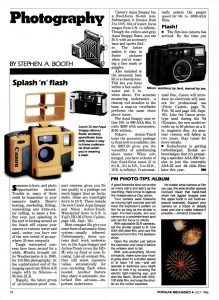
When it was released, the only other 35mm option for underwater photography was the expensive Nikonos, so articles such as the one to the right from the July 1986 issue of Popular Mechanics heavily touted the new opportunities a Canon Aqua Snappy would allow.
With a retail price of $200 with the accessory kit or $160 for the camera only, these prices compare to $510 and $410 today, making them affordable for most people.
The Canon AS-6 Aqua Snappy was likely a good seller as it was in production until 1994 when it was replaced by the Canon Sure Shot A-1 which added full autofocus capability and enhanced above water shooting modes. A quick search of eBay shows 37 different examples for sale, further suggesting the camera’s popularity.
Today, there is still a market for underwater 35mm cameras as the prospect of using expensive and very technology rich smart phones and digital cameras is not appealing to many people. While finding new 35mm film cameras is not easy to do, you can still find underwater disposable cameras like the Fujifilm Quicksnap 800 Waterproof camera for sale at places like Walmart.
For someone needing something a little more flexible and with a better lens than a cheap disposable, cameras like the Canon Aqua Snappy are still viable options for all your underwater vacation photography needs.
My Thoughts
I can’t remember where I got my first Canon AS-6 camera from as I’ve had one laying around for a couple of years before I ever took one out to shoot it. I always knew this was a camera that if I were to use it, I’d want to use it for it’s intended purpose, and as a person who rarely goes swimming in anything but an above ground pool in someone’s backyard, I always thought I’d wait for a good opportunity to use one.
My first AS-6 came in a vinyl case without any other accessories, but the second one which I acquired much later had the rubber strap and accessory viewfinder shown in the beauty pics of this article.
Handling the camera, the AS-6 is quite a bit larger than most other 1980s point and shoots. Even without the rubber strap, the camera is surprisingly thick with a deep handgrip on the right side. The added thickness is no doubt caused by some of the needed waterproofing to keep water out of the camera, but also makes the camera very easy to hold while wet. I would still recommend the use of a wrist strap while swimming, however.
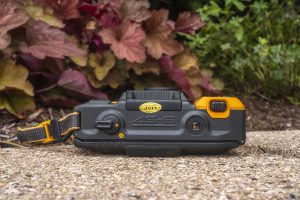
The top plate has little to see other than the flash on/off switch, automatic resetting exposure counter, and the large rectangular shutter release. The flash works both above and below water, both as a fill and a low light flash. The camera’s manual recommends turning the flash off when not in use to prevent draining the camera’s batteries.
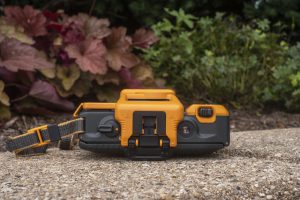
With the optional rubber strap attached to the camera, all three of the top plate controls are still usable, but an additional accessory shoe can be used for the auxiliary sports finder. If you have no need for the auxiliary viewfinder, there is no need to have the rubber strap on the camera as it provides no other benefit, but also makes getting to the film compartment more difficult.
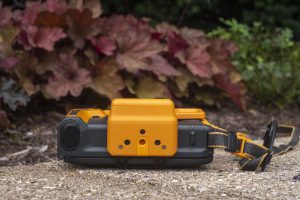
The bottom of the camera has the opening for the battery compartment and a 1/4″ tripod socket. The tripod socket is there both with and without the rubber strap attached. Inside of the battery compartment is a holder for the two AAA cells. In order to open access the batteries, you must use a coin to turn a release lock on the camera’s right side.
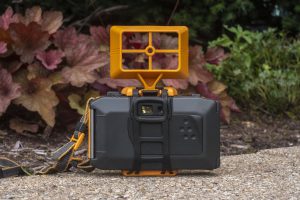
Around back, there’s not much to see other than the eyepiece opening for the viewfinder. With the optional rubber strap and sports finder attached, you can get a good look of what it’s like to peer through the sports finder. The sports finder should only be used to compose things at least 10 feet away above water and 5 feet underwater as it has no option to correct for parallax. The manual suggests that you should keep your eye about 3 inches from the back of the sports finder for the proper perspective.
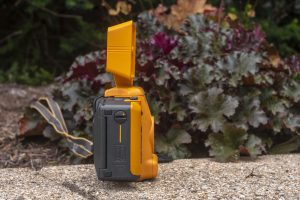
The camera’s right side is where you see the coin operated release for the battery compartment. Turn the lock so that the orange dot is aligned with the orange line to release the battery holder.
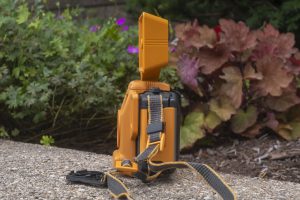
On the left, we see both the strap loop for the original wrist strap. While wrist straps are a good idea for any point and shoot, it is especially useful with underwater cameras as you can keep it securely attached to your body while swimming. Although the Canon AS-6 is designed to be buoyant, it’s probably a good idea to never have to test that.
This side of the camera also has the release for the film compartment. Unlike a normal film camera in which the film door just needs to keep light out, underwater cameras need to be much more secure to keep water out. The door release acts as a strong clamp keeping the door pressed firmly against a large O-ring to protect it from water.
If you have the optional rubber strap attached to the camera, you’ll need to remove it before trying to open the camera. Once that’s done, with the camera securely in your left hand, grip the orange door release with the fingers of your right hand along the front edge of the camera, and pry it backwards as in the first two images below.
Next, while maintaining pressure on the film door with your right hand, use your left hand to unhook the latch on the back of the release to completely release the right hinged film door.
With the film door open, you get a good look at the O-ring protecting the film compartment. On both of the Canon AS-6’s I had, this door seal showed no signs of rot or cracking. It is a good idea to inspect O-rings on any underwater camera, making sure there are no cracks or debris stuck to it, which could compromise the seal.
Film loads from left to right onto a thick rubber take up drum. The AS-6 has a quick load feature, in which loading film only requires you to extend the leader to the indicated line and close the door. Once the door is closed, the camera will not automatically start advancing the camera, you must do this manually by repeatedly pressing the shutter release until the number ‘1’ appears in the exposure counter.
When closing the door, be absolute sure that you securely attach the clamp on the side, to ensure there is a strong seal for keeping water out.
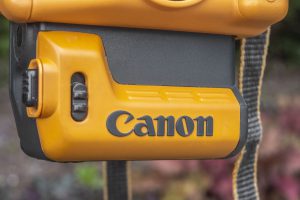
Up front, there’s little to see other than the shutter lock above the Canon logo on the hand grip. The Canon AS-6 does not have a physical power button as half pressing the shutter release powers on the electronics, but with the shutter locked, the button can’t physically moved, so therefore, the camera is effectively ‘off’.

The in-body viewfinder is rather basic, showing just projected frame lines matching the Canon lens’s 35mm focal length. Near the bottom is a lightning bolt symbol with a red LED beneath it which functions both as a battery check and low light warning to use the flash. There is no attempt to correct for parallax as the focus distance varies above and below water.
It is clear the Canon AS-6 Aqua Snappy was built for a very specific purpose, to be an underwater camera. Handling the camera, no one would mistake it for anything less. It’s got distinct looks, a very easy to handle and grippy body, and although the technical specs won’t wow too many land photographers, it’s simplicity should actually work to it’s benefit, allowing for the best possible chances at properly focused and exposed images above and below water.
I don’t go swimming often, so having a camera like this isn’t something I’d likely use often, so when I decided to test this camera, I wanted to be sure I used it to it’s strengths. How did it do>
My Results
With the opportunity to take my family on a vacation that would include a water park in Rapid City, South Dakota, I loaded up the Canon Aqua Snappy with several rolls of Fuji 400 film. The DX encoding in the camera can only detect 100 and 400 speed films, so I chose 400 to give me a couple extra stops of exposure in what I thought would be unpredictable light.
When I review a mid 1980s fully automatic point and shoot camera, I generally assume the images will look pretty decent, if a little unremarkable. After all, these cameras were made for the masses. People bought them to make 3×5 or 4×6 prints with little regard to things like edge to edge sharpness, coma, or chromatic aberrations.
In the case of the Canon Aqua Snappy, this was a purpose built underwater fixed focus point and shoot with a relatively slow f/4.5 lens, so I honestly didn’t know what to expect. I guess I figured I’d get images somewhere between a disposable underwater camera and a Nikonos.
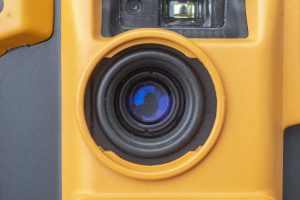
The reality is “somewhere between a Nikonos and a disposable” is a pretty good summary of the image quality. The images in the gallery above show a remarkable sharpness, even underwater, and good color accuracy. There is noticeable vignetting and softness near the edges which is a bit surprising as this is a 5-element lens, but once again, for the target customer that would have bought this camera, it was likely more than adequate.
The exposure system wasn’t perfect, underexposing a number of shots at the water park, but it got it right more than it didn’t. I took a few pictures with flash that looked very “flash-y” with bright foregrounds and muddled backgrounds, which I am not sharing as they’re a bit unflattering to those in the photo, but at the very least, I can say it works fine.
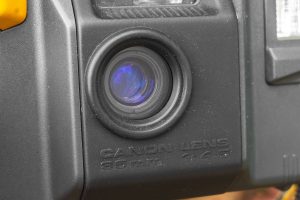
Although I show the Aqua Snappy in this article with the large plastic sports finder attached, I did not use it while shooting at the water park and found the built in viewfinder to be good enough, even while wearing prescription glasses (yes, I wear my glasses to the pool).
With the rubberized front case, the camera is a bit bulky, but that’s not really a problem working in a wet environment. I found the large grip and rubber texture to be comfortable to hold when wet, and although I never let the camera float away from me in the water, the bright orangish-yellow plastic would have been very easy to see.
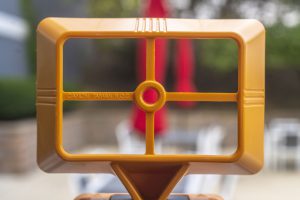
Most importantly, the large rubber O-ring around the film compartment did it’s job, despite being 35 years old. I have no idea how long these seals are rated, but with several dunks in a pool, trips down a water slide, and many laps around a lazy river, there was never a sign of leakage as my film was dry each time I removed it from the camera.
Perhaps the most notable thing about using the Aqua Snappy is the novelty of not having to worry about using a camera in the water. With today’s smartphones and digital cameras, we’ve become so accustomed to avoiding getting them wet at any cost. Drop your iPhone in the toilet and a panicked rush to find the nearest jar full of rice will ensue, but not with the Aqua Snappy. Wrap it around your wrist and jump in the pool! There was more than one occasion where people at the water park took a second look at me there in the pool with a camera taking pics of my kids.
If the Aqua Snappy was just a Snappy, I wouldn’t be writing this review. On paper, this is a pretty boring camera with very few controls, a bland shooting experience, and a lens that’s just OK above water, but use the camera to it’s strengths at the beach or the nearest water park, and this is an immensely fun camera to shoot. Whether if you’re curious about how good a mid 1980s water proof point and shoot camera is, or if you genuinely want an affordable option for good photos underwater, and don’t want to invest in a dedicated underwater system camera, the Canon AS-6 Aqua Snappy is a terrific bargain and more than adequately gets the job done!
Related Posts You Might Enjoy
External Links
https://global.canon/en/c-museum/product/film119.html
http://www.brokencamera.club/blog/canonas6
http://www.collection-appareils.fr/x/html/page_standard.php?id_appareil=1734

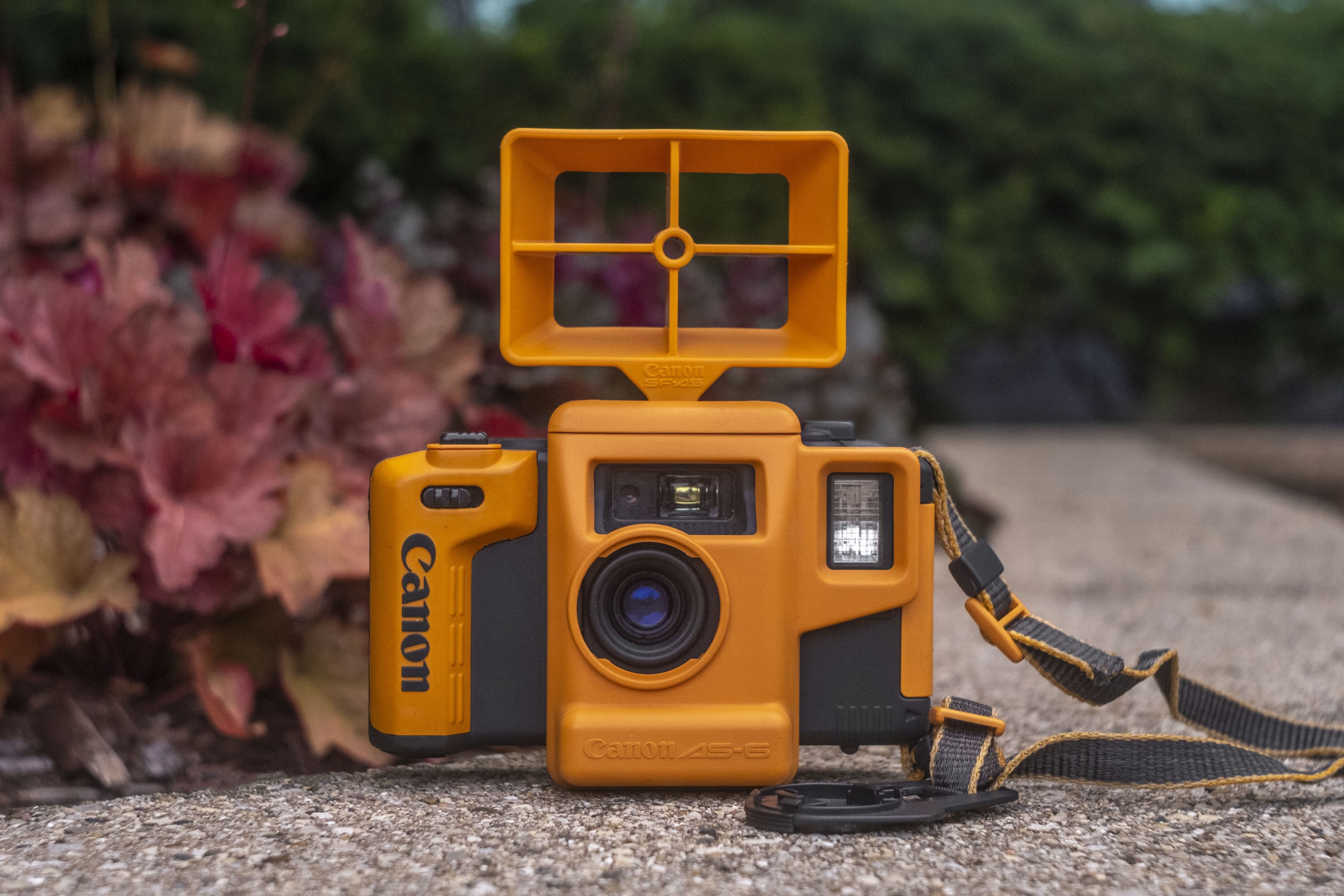
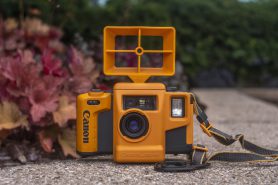
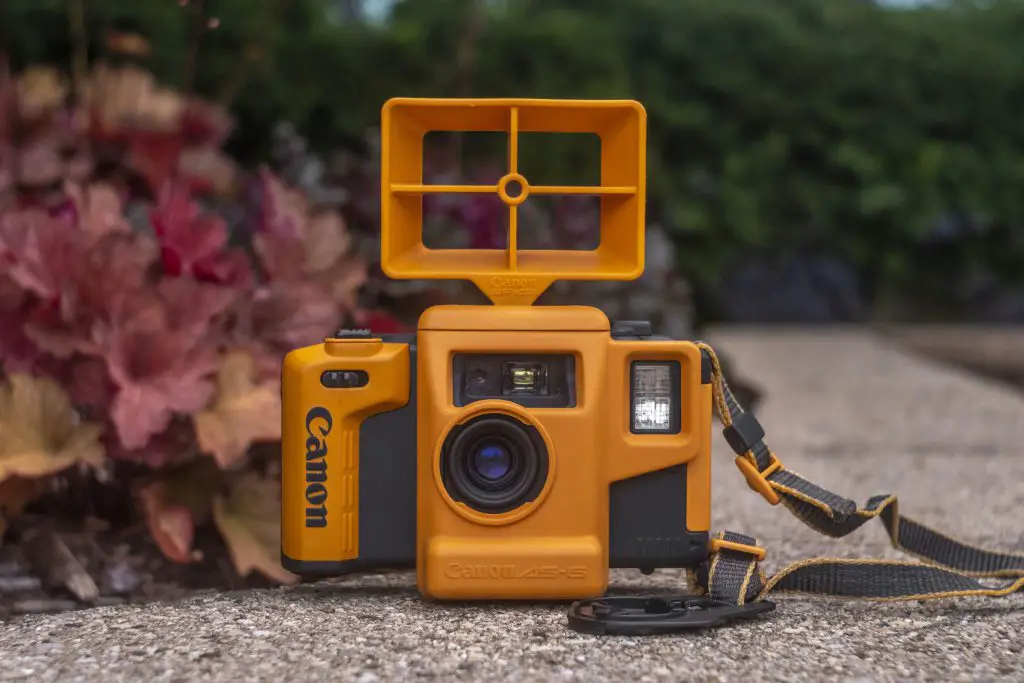
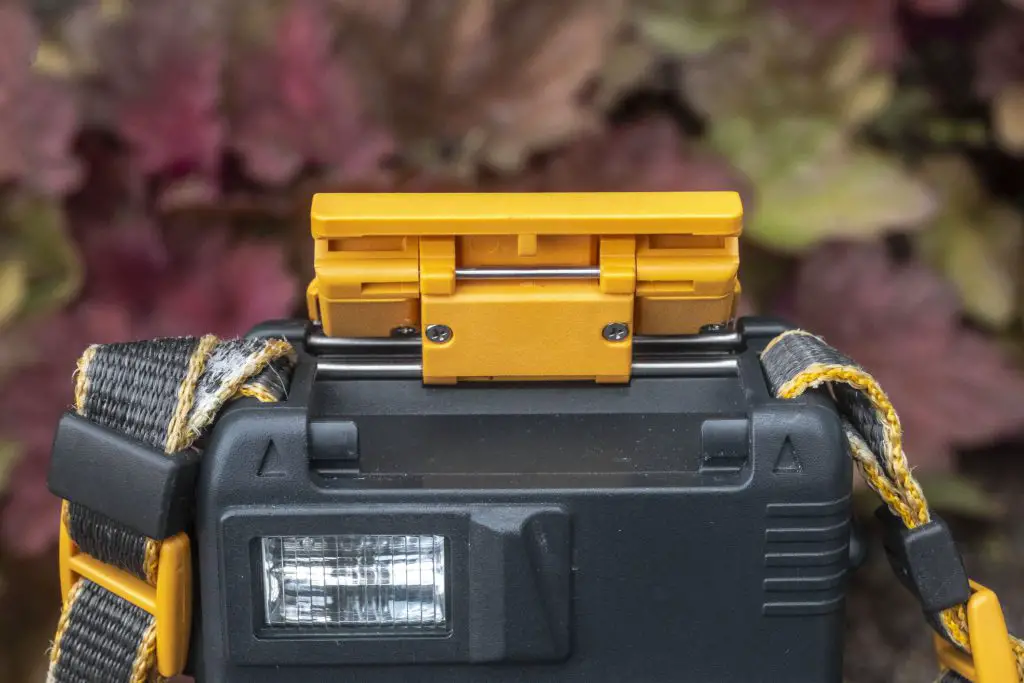
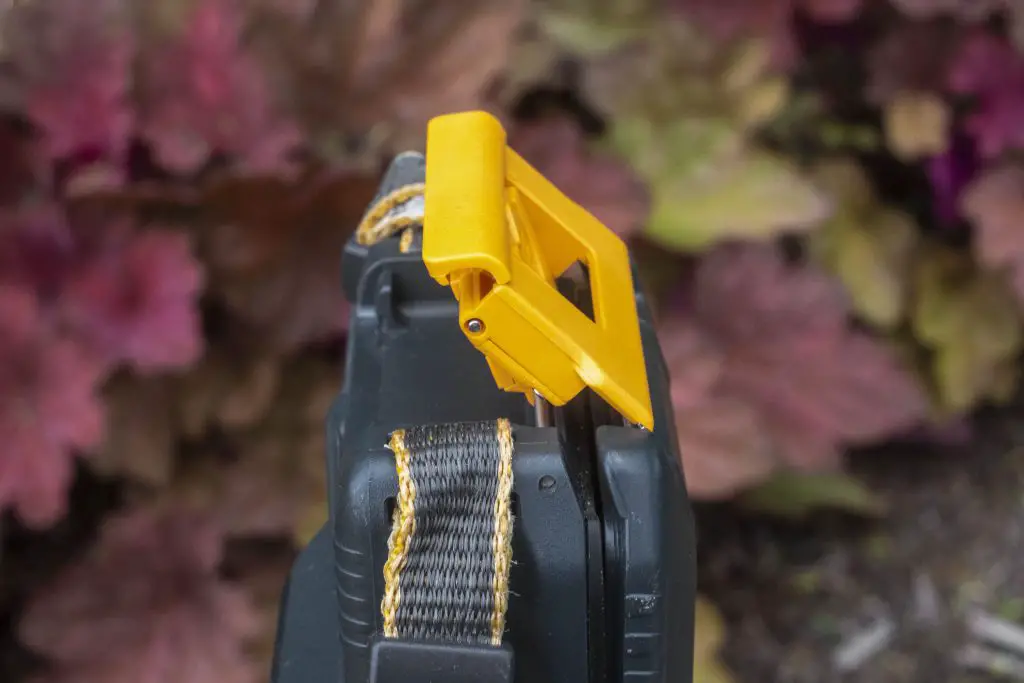
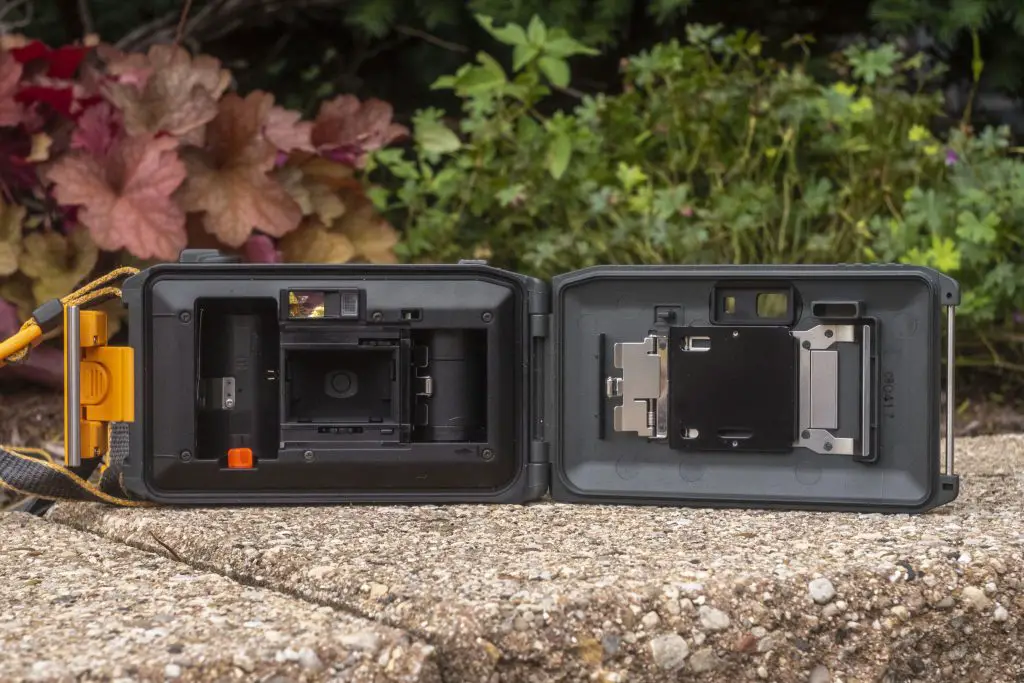


















Mike, a look at eBay shows two different-looking cameras both named AS-6. I wonder if you reviewed the original model, as the other version looks considerably simpler in design. Any thoughts? Thanks!
I don’t believe Canon ever made another camera called the AS-6. I just looked at eBay and what I think you’re seeing is that some of them have the orange strap on and some don’t. That part is removable and without it, the camera looks very different. They’re all the same model though.
As much as I prefer older cameras, I really find the cheaper/easier to use automated point and shoots of this era fascinating. Keep an eye out for a Chinon Bellami, I have gotten nice results from mine and it’s a nice quick compact shooter. It’s super quick to whip out for a quick candid shot and the exposure meter is surprisingly accurate most of the time.
Great article as usual, I have spent countless hours reading this website while traveling or during my work breaks.